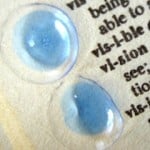I’m starting another series of posts here – gotta love blog tags – and I’m going to poach @AngelaMaiers’ hashtag. Well, at least I think she coined it based on her TEDx video (a must-watch) which I stumbled upon on @ShannonInOttawa’s blog. Incidentally, I stumbled on @ShannonInOttawa on an @edchat tweet on homework as deliberate practice based on @kathleencushman‘s work. and so on and on….
’nuff prologue!!!!
meet Tania
I’m a parent volunteer for the Literacy Program at my daughter’s school, run by an ex-primary school teacher. It provides one-one-one help to targeted students on reading and writing, with plenty of grammar tossed in.
Today I met Tania (not her real name) who’s in year 8, visibly an ESL (English as Second Language student) student. Her parents are also ESL-speakers. She’s been in Australia for 3 years and speaks with an accent which I think makes her self-conscious.
She had to read aloud a couple of chapters and then answer a worksheet to test her comprehension as well as provide practice for writing. I challenged Tania to read with feelings and proper intonation. While she gave me a shy laugh, she actually did try and did rather well, I reckon. And, I told her so.
When she completed the worksheet, I commented specifically on how well she was doing with her tenses. She just smiled but seemed to grow with confidence with every question and answer.
Before resuming work after a 15-minute break (it’s a 2-hour session), we had this conversation:
me: Do you like to read?
Tania: No, not really.
me: Are you sure? There must be something you do like to read?
Tania (tentatively and quietly): Well, I like comic books.
me: My youngest loves comic books. Do you know someone said that reading comics books makes you think what happens between the boxes. It makes you more imaginative. That’s a good thing. (from @vormamim – see tweet)
Tania smiles. (priceless)
me: So next time someone asks you if you like to read, what do you say?
Tania: Yes.
me: And…?
Tania: I like to read comic books. (smiles again)
It didn’t end there.
Later on, one of the worksheet sections was obviously too easy for Tania. I asked her to confirm and she did. Well, I told her then to write so on the bottom of the page, i.e. “This is too easy for me. Give me something harder.” And she did – with a cheeky smile. I signed next to it because I believe it.
Wait there’s more….
As she moved on to the Auxiliary verbs, she struggled a bit. When I seemed to be unsure myself (I’m ESL too and sometimes the vagaries of the English grammar escapes me), I suggested to sound it out. That strategy helped and she tried this again in subsequent numbers. She even thought it fun when I suggested she move beyond the verb”to be” and try using might, may, etc. After that, she seemed more confident to ask for help and show uncertainty.
She gave me a big smile at the end. I gave her a big smile back. In fact, the smile lingered.
Reflection:
It was the first time I met Tania but after 2 hours, I felt like I’ve known her for longer. I’d like to think that through my actions and feedback Imanaged to convey that #YouMatter and #Icare (I’d like to coin that one, if I may). For those 2 hours, Tania mattered to me. Beyond checkmarks, I gave her written feedback as well, i.e. what she was doing well, her progress and where she could improve.
Saying “I care” closes the loop that “You matter” starts. It forms a connection, a relationship, albeit temporal.
You matter to someone; that would be me. I care.
I wish the program itself was more exciting and differentiated. I wish we had better worksheets, if we were to use them at all. But that is perhaps a mission for another day.
Today, I was very happy with the session. As I was filling in for another volunteer, I doubt I would see Tania again though I have no doubt her literacy skills will continue to improve as she gains confidence in her improvements. I hope that even for a little while she felt that she was not just another support student: She’s Tania, a girl who loves to read comic books.
How much of all these came from Twitter?
If you ever doubted what benefit having an online PLN gives, this is proof enough.
Today was a good day for learning….and teaching. (Should an ESL-speaker teach English to ESL-speakers?)

